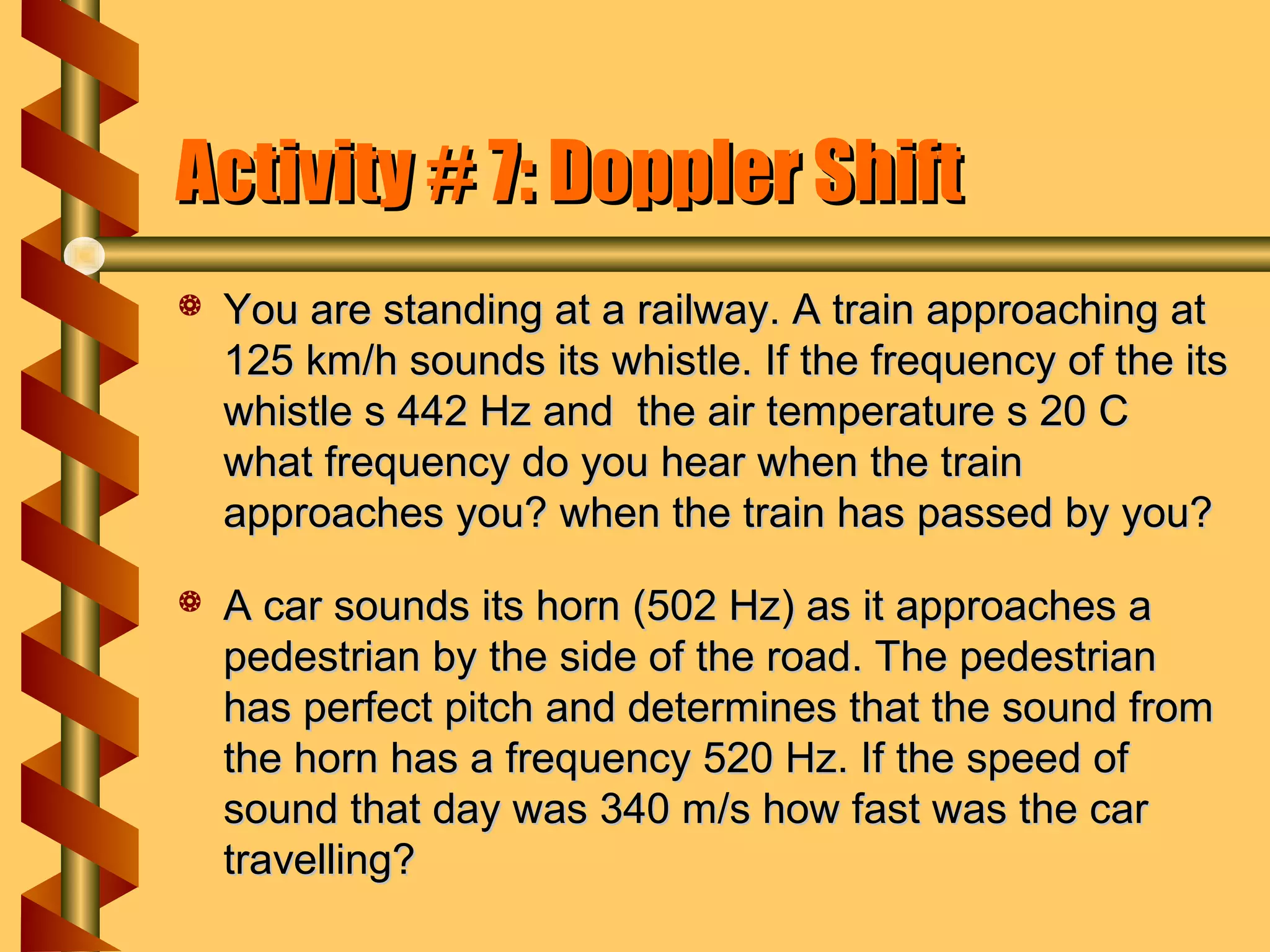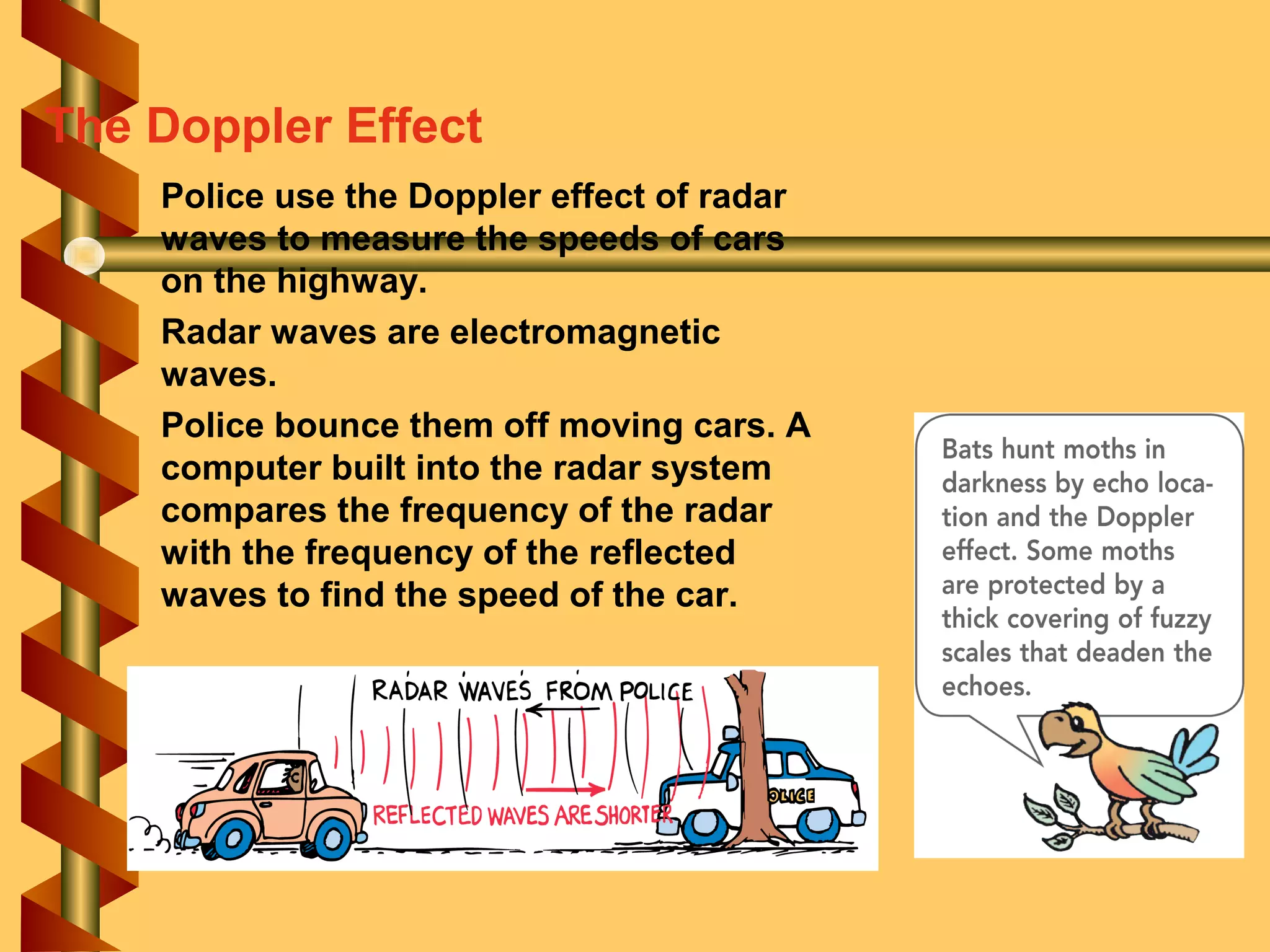The Doppler Effect describes how the frequency of waves is altered by the motion of the source or observer. It was first explained in 1842 by Christian Doppler. When the source and observer are moving towards each other, the perceived frequency is higher than the actual frequency. When they are moving away from each other, the perceived frequency is lower. This shift in frequency due to motion is known as the Doppler Effect and applies to sound waves, light waves, and other wave phenomena.

















